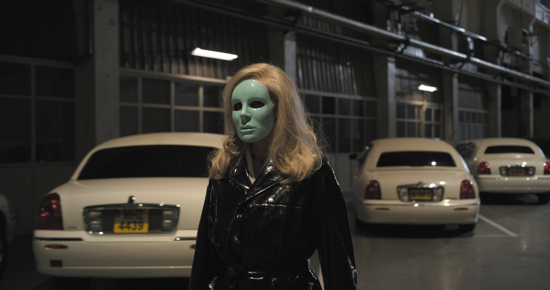"All big cities are the same now. It used to be easier at weekends. Not anymore, you get the white stretch limos everywhere. You see them at first, you think, ‘Is it a celebrity or a foreign dignitary?’ No, it’s some slags." Marcus Brigstocke, 2006
If Holy Motors is one of the boldest movies you’re likely to see this year, then ironically its message is borne of a King Canute-like frustration at the grinding wheels of progress. In many ways it’s a love letter to the director’s own belle époque and an attack on modernity, the epistle of an angry man seething at change. Thankfully it is also brave and charming and funny and magnificent on the eye, not to mention absurdly Pythonesque enough to get away with any ill temper.
Leos Carax has not made a full-length feature since 1999’s Pola X, disenfranchised by the proliferation of digital cameras, a format he says he actively despises. Having finally relented, Holy Motors patches together a series of vignettes new and old. These include ideas and characters reprised from previous shorts such as ‘Merde’, which was both the title of Carax’s segment of the 2008 anthology Tokyo! and the name given to the sewer-dwelling, city-terrorising gremlin portrayed therein by Denis Lavant.
However, to imply that this is a series of sketches woven together – as some critics who saw the film at Cannes did – is to discredit the director, who has made a heterogeneous and sometimes unhinged picture into something altogether coherent and engaging. This is also to the credit of longtime collaborator Lavant, who mesmerises as Monsieur Oscar, the ever-transmogrifying lead going about his business in modern-day Paris.
The movie is a kind of day in the life of Oscar, a businessman/actor driven to various appointments by his chauffeur Céline (Edith Scob), keeping rendezvous often under extreme duress. One hour he’ll be begging, the next playing the accordion, the next he’ll be getting stabbed in the windpipe.

It’s in the back of the limo that Oscar seems to lament his lot in life as he daubs on the greasepaint or removes his wig, though each time he emerges fully immersed in character he’s ready to tread the proverbial boards, no matter how gruelling or mundane the assignment. His boss questions whether his heart is in it after all these decades. Céline observes him day and night: you sense that she regards him with guarded affection, plus more than a soupçon of pity. And there’s ultimately a sense that if Oscar’s days are numbered then the industry as a whole that these people work in – whatever that might be – has ceased to be relevant and will be relinquished before too long.
The Holy Motor itself is a bygone relic, a former symbol of prestige that has diminished in importance as perceptions change. Oscar is a heavy smoker as well, both in the back of the vehicle and in his various incarnations, harking back to a time when people puffed away at their desks and Gainsbourg rode high in le hit-parade. Indeed, there’s almost an antediluvian fetishisation apparent throughout. This satire on modernity often lacks subtlety, but that’s not to say it isn’t inspired. The show stealing scene with the aforementioned Monsieur Merde, shot in Père Lachaise Cemetery, features tombstones carrying URLs. There’s even a swipe at the former President M. Sarkozy when Merde takes Eva Mendes’ scantily clad model and turns her attire into a burqa, a scene more likely to resonate with French (or Belgian) audiences than elsewhere.

Carax has joked that were Lavant (whom you’ll recognise from UNKLE’s ‘Rabbit In Your Headlights’ video) not available then he would have cast Chaplin. It’s a testament to Lavant’s tremendous ability to hold the viewer’s attention, especially given the long sequences with no dialogue. Having myself seen this film in France without subtitles with only an elemental understanding of the language, and then for a second time with subtitles in London, not that much was lost in translation. Of the nine ‘incarnations’ only three or four really rely on dialogue. One of those scenes, of course, features Kylie Minogue, who gamely slips into some French. Her screen presence and musical number ‘Who Were We?’ (written by Carax and Neil Hannon) only adds to the camp pathos and undercurrent of menace on offer.
Like his contemporary Luc Besson, Carax helped to define French cinema in the 1980s, and while Besson went to Hollywood and Carax became ever more experimental, the auteurs share a similar aesthetic vision. Holy Motors looks delicious, is beautifully paced, and most importantly allows the audience to draw its own conclusions. As mentioned, there are moments of overt satire, but there’s no spoon feeding. Maybe the strangest and most frightening aspect of Monsieur Oscar’s strange and frightening world is that his bizarre travails might in some way feel familiar.



